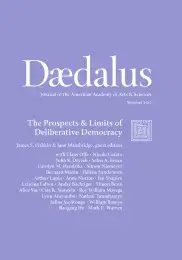JAMES S. FISHKIN, a Fellow of the American Academy since 2014, is Director of the Center for Deliberative Democracy, the Janet M. Peck Chair in International Communication, Professor of Communication, and Professor of Political Science (by courtesy) at Stanford University. He is the author of When the People Speak: Deliberative Democracy and Public Consultation(2009), Deliberation Day (with Bruce Ackerman, 2004), and The Voice of the People: Public Opinion and Democracy (1995).
ROY WILLIAM MAYEGA is a Lecturer in the Department of Epidemiology and Biostatistics at the Makerere University School of Public Health, Uganda. He is a Ph.D. student in Medical Science on a joint program between Karolinska Institutet, Sweden, and Makerere University. He has published articles in PLOS ONE and Diabetes Research and Clinical Practice.
LYNN ATUYAMBE is Associate Professor in the Department of Community Health and Behavioral Sciences at the Makerere University School of Public Health, Uganda. He has written for such journals as PLOS ONE, BMC Medical Education, and Pan African Medical Journal.
NATHAN TUMUHAMYE is a Research Fellow and Director of the Eastern Africa Resilience Innovation Lab at the Makerere University School of Public Health, Uganda. He has written for such journals as BMC Public Health, PLOS Currents, and Health.
JULIUS SSENTONGO is a Research Fellow at the Makerere University School of Public Health, Uganda, and a practicing physician. His research has been published in PLOS Currents: Disasters and by the Eastern Africa Resilience Innovation Lab.
ALICE SIU is Deputy Director of the Center for Deliberative Democracy at Stanford University. Her work on Deliberative Polling has been published in The Search for Deliberative Democracy in China (2006), Governance Reform under Real-World Conditions: Citizens, Stakeholders, and Voice (2008), and prominent journals including British Journal of Political Science.
WILLIAM BAZEYO is Dean of the Makerere University School of Public Health, Uganda, where he is also Associate Professor of Occupational Medicine. He is Director of the Centre for Tobacco Control in Africa. He has published articles in such journals as BMC Psychiatry, PLOS Currents, and Annals of Global Health.
